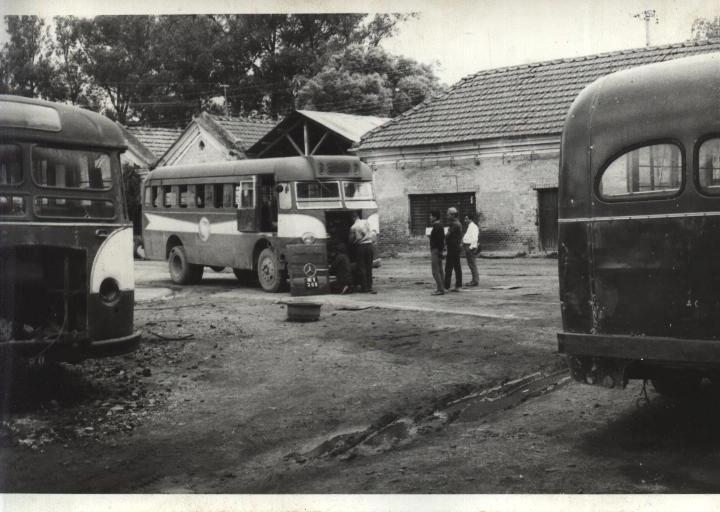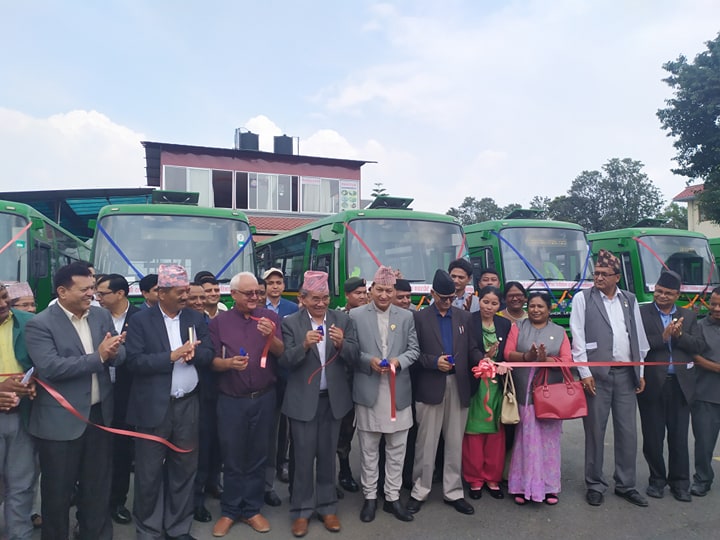0%

KATHMANDU: Sajha Yatayat Co-operative has till now added 71 public buses (popularly called Green-lines because of its prominent streaks of green color on the chassis) in course of expanding its services and reaching out to more numbers of daily commuters to ferry them in and around the city.
Not just the federal government, local governments include Kathmandu Metropolitan City (KMC), Municipal Corporations in Lalitpur and other such satellite cities and towns to run those buses. Though Sajha Yatayat has never stopped expanding its services by adding more number of buses in its network, its kitty has been squeezing and the organization has been running into loss. The audited account of Sajha Yatayat says it all —- it suffers a loss of more than Rs 10.5 million every year. Why, then, local governments in Nepal are competing with each other in placing orders for more Sajha buses? Even provincial governments are staking their bet on purchase of Sajha Yatayat buses.

Sajha Yatayat Cooperatives registered the loss of approximately Rs 11 million (10.78 million to be exact) in a fiscal year 2074/75 BS. The loss-making Sajha Yatayat just recently bought 20 new Green-lines for Rs 50 million to add them in its network. Before that, Sajha Yatayat had suffered a loss of about Rs 37 million (Rupees 36923000 to be exact) in the fiscal year 2070/71 BS. Similarly, in the fiscal year, 2071/72 Sajha‘s loss was calculated to be around Rs 7.3 million (Rupees 7268000) and in 2072/73 BS, around Rs 11 million (that is to be exact Rs 19972000).
Sajha Yatayat was set up as a cooperative on Chaitra 3, 2018. Sajha Yatayat began its services in Kathmandu by entering into public transport to cater to the urban populace on/from Shrawan 1, 2019. Sajha Yatayat trotted on with unsteady pace since then received a heavy blow from the then government in 2058 BS when it was dissolved and its services in public transport ceased to operate abruptly.
The Patan Appellate Court in response to the dissolution of Sajha Yatayat reversed the decision of the government and reinstated it. Sajha Yatayat, though brought in life by the court order, was fumbling as the administrative and managerial mismanagement didn’t allow it to become financially healthy. As the fate would have it, once again services of Sajha Yatayat were discontinued in the year 2064 BS (from the month of Jestha). It was resuscitated once again in Chaitra, 2069 BS. The next year from Baisakh 1, 2070, the Sajha Yatayat resumed its services by ferrying the daily commuters in and around Kathmandu Valley. Since then, its services have never been called off. Beginning with just 16 Green-lines public buses, the Sajha Yatayat has bedecked its transport bus stand with a fleet of 71 Green-lines.
Common people appear to be satisfied with the scale and standard of services being provided by the Sajha Yatayat Cooperative. In fact, the country’s citizenry takes pride in having Sajha buses plying on different routes of the country and express their confidence in it as it is, if compared with other available options, the most reliable public transport system in Nepal at present.
The perpetual loss shown in its account book every year is the only spanner in already troubled water of public transport of Nepal that is most likely to bolt the Sajha Yatayat out of gear. This concerns the common people whose life is inextricably linked to the financial health of Sajha Yatayat as the provider of public transport services at an affordable price. What attracts the people the most is that Sajha Yatayat as a public-spirited organization has always been at services of the people plying buses without a stop and ferrying commuters every day. Isn’t it the example of the resilience of the public organization to continue to serve the public despite being in poor financial health?
Bhushan Tuladhar, Managing Director of Sajha Yatayat, confirms that it is in public domain that they are running into loss every year but have never given up on their public duty to run the Green-lines every day to serve the country’s citizenry. Province Number – 3 is to invest Rs 300 million, KMC Rs 100 million and both Lalitpur Municipal Corporation and Sajha Yatayat will invest Rs 20.5 million.
Sajha Yatayat just is bringing in 20 new public buses to further expand its public services in Kathmandu Valley next week. Kailash Prasad Dhungana, Minister for Economic Affairs and Planning, finds electric public buses very contemporary as these buses are ‘fuel saver’ and ‘environment-friendly’. “These buses will also contribute to our domestic economy,” assures Dhungana.

Dormani Poudel, the Chief Minister (CM) of Province-3, says that the number of electric buses in coming years must go high to accommodate more and more daily passengers in them as these buses do not cause pollution and keep the atmosphere and surrounding environments all clean. “Certain times the government keeps on investing in public organizations even though the public organization such as Sajha Yatayat is not posing profits. It is so because investing in these organizations is in people’s interest,” says Poudel adding for Khabarhub: “Electric buses are very helpful for the overall development of Kathmandu Valley and more importantly for a pollution-free atmosphere here. This is why the provincial government has handed over the money to Sajha Yatayat for buying electric buses.”
Electric buses cannot ply on roads of the metropolitan city unless there are ‘charging stations’ at different places together with other infrastructural facilities such as roads and all. CM Poudel continues to add, ”This is a right time to create an environment for making the base for playing electric buses in Nepal and specifically in Kathmandu Valley.”
How far is the electrical bus?
Time and again a debate regarding the purchase of electric buses surfaces in Nepal to catch the attention of common people. Unfortunately, it has never been brought to roads. This time, electric buses are to hit the ring-road of Kathmandu as a pilot test succeeding which will introduce the electric buses in the entire public transport system. If the government is at all serious in improving the condition of the public transport system of Nepal, electric buses can be much easier to implement in the public transport system than that of the rail network.